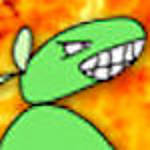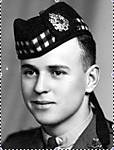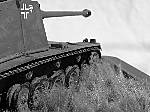Quoted Text
Justin, well she turned out mighty nice, great job!! My only critique on the camo pattern is that technically the yellow 'spots' were created by spraying over a stencil of circles so that the ;spots; were actually the negative space in-between the circles and would have had concave curves (see below). Having said that I think you got the effect pretty good without your airbrush!
@Jim
The scheme displayed here technically isn't an 'ambush scheme' but a 'disc type' camo sometimes referred to as TII. The difference is that the ambush pattern was applied by either spraying the green and brown on over the yellow in circle shapes by hand or using a cut out circle (the inside, or donut hole part) and then dark yellow dots or triangles were added over top.
The disc type was made by first painting the soft edge three color camo scheme (just as Justin did) and then cutting out a few dozen circles, taping them together so they slightly overlap to make a stencil and then overspraying the dark yellow so that it fills in the spaces between the circles (the negative space from around the outside of the circles) I know its kind of difficult to express in words but if you click on the links I posted on the last page you can get a good idea of what I mean.
It was a pretty rare pattern probably because of the complexity of application but it has been documented on Jagdpanzer IVs from the ardennes and some panthers from the LAH (as seen in te heimdal book)
Anyways, great job Justin...now onto the Jagdpanther??
Hi Justin. I know that museum restorations are often inaccurate. It's another one of those things that add confusion to the whole scheme of trying to figure out what was what. I put up the link purely as an example of the camo scheme, not as a reference or color guide. I know when i have tried to research German paint colors and guides I found so much conflicting information and things I had never heard before. Some authorities have stated that no paint samples exist from any WWII German AFV paints. Others have said they do exist and some have even claimed possession of them. One individual wrote that German AFV interiors were actually partially blue, and not fully the ivory or buff color. I have read that all German radios were blue but I found a site whose owner collects and restores WWII German radios. And they were of half a dozen colors. As I mentioned earlier, some say paint shortages existed; some say there never were any. Claims have been made that primered road wheels were installed towards the end of the war; others scream this is Heresy but then photos were shown of this very thing. As you point out, there were field applications left to the creativity of the crews. I read somewhere on this forum some months back that there is a definitive book being written to clarify much of this stuff. If the author hasn't gone insane yet, I hope he completes it and it is printed and affordable.

Anyway, I'm looking forward to following your next build!

Hi Tskross! Interesting about the camo definitions you provided. Thank you! It seems that the ambush pattern as shown in the World War II Zone link isn't something I can say I have actually seen before and definitively identified it as such. It looks more like a variation of the Mickey Mouse pattern the British used as far as the over-lapping circles go. I can sort of see it in some vehicles, but it doesn't seem to be uniformly applied. I understand what you are saying in your description, but I would think there wouldn't be the linear edges and smooth arcs that define the edges of the different colors. Were they made of continuous overlapping circles, I would think they'd have at least a somewhat serrated appearance along the edges. I don't see the concave sided triangles and diamond shapes that would result from circles overlaying an area. While it is possible to overlap circles close enough together to give the appearance of a smooth edge, I would think it easier to just paint a smooth edge to begin with. Or is what you are saying that the yellow was then sprayed on those shapes, the triangles, diamonds, etc. to fill them out? It might be my eyes aren't as good as they once were and I can't pick the shapes and shading transitions out of the old B&W photos as well as I once did. Then again, maybe true ambush camo wasn't all that widely used. I had heard the 3 color, green, brown, and yellow, irregular shaped camo pattern with the flecks of a contrasting color in each color called ambush camo so that's where I likely picked it up from. I thought it was the addition of the flecks that differentiated it from the normal 3 color pattern and is what made it the ambush variety. I wonder now if that flecked scheme is called something else? The first picture in the WWII Zone thread -second actually since the first has been taken down- I have heard that sharp, angular pattern called "carpet camo". Always something!


























